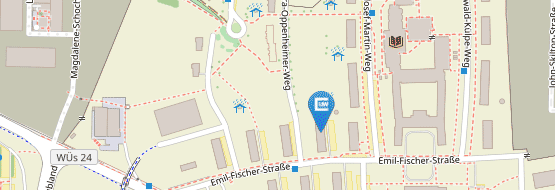Research
1 Quantum Theory of Molecular Femtosecond Spectroscopy
The excitation of molecules with ultrashort laser pulses prepares the interrogated system in a non-stationary quantum mechanical state. As a consequence, any measurement of an observable results in a time-dependent signal. Using a specially designed pump-probe scheme (excitation of a system with a short pulse, interaction of the system with a time-delayed second short pulse) it is possible, to record the quantum dynamics of the system in real time.
We use numerical solutions of the time-dependent Schrödinger equation for the simulation of transient spectroscopy applied to molecules. Therefore it is necessary to calculate the respective experimental signals. Here we treat the following techniques of time-resolved femtosecond spectroscopy:
- Pump-Probe Fluorescence
- Pump-Probe Ionisation (total ion yield)
- Pump-Probe Ionisation (photoelectron spectra)
- Pump-Probe Four-Wave-Mixing-Spectroscopy (CARS, DFWM, FWM)
The following aspects are under investigation:
1.1 Rotational and vibrational wave-packet dynamics
Transient spectroscopy of internal molecular motion reveals quantum beats which are due to the excitation of a coherent superposition of ro-vibrational states in one or several electronic molecular states. Phenomena like quantum mechanical revivals, mode-coupling or multi-photon induced interferences are studied.
1.2 Time-resolved photofragmentation dynamics
The aim of such studies is the detection of the time-evolution of photo-induced elementary reactions. A textbook example for such a process is the electronic predissociation of the NaI molecule. Here, a non-adiabatic coupling between electronic and nuclear degrees of freedom cause the decay of the quasi-bound complex which exhibits resonances with lifetimes ranging from the femtosecond to the nanosecond time scale. For dissociation processes, we are also interested in the selective population of different fragmentation channels via laser excitation (coherent control).
1.3 Time-resolved spectroscopy of collision processes
The perturbation of molecular wave-packet dynamics induced by collisions causes various effects. Our studies include the characterization of collision induced predissociation and recombination, vibrational relaxation and dephasing. The iodine molecule in rare-gas environments and in zeolites has been treated in connection with femtosecond experiments performed in Würzburg and in other laboratories.
2 Interaction of molecules with intense laser pulses
The possibility to produce ultrashort pulses with high intensity has opened a new research field. Here we study e.g. interference effects caused by Rabi oscillations between molecular electronic states and also isotope effects which occur in ionization processes.
3 Methodology
The treatment of complex systems requires the introduction of approximative methods. We have pursued several approaches which are applied to collision systems and to short-pulse excitation processes:
3.1 Gaussian wave-packets
Giving an initial Gaussian wave-packet, the expansion of the interaction potential up to second order around the center of the packet, yields simple equations of motion for the parameters of the Gaussian. We extended this method to the description of laser-excitation processes.
3.2 Mixed quantum/classical dynamics
The devision of a system into one subsystem treated quantum mechanically and another treated classically, results in coupled quantum/classical equations of motion. A symplectic algorithm for the solution of these equations was developed.
3.3 Classcial dynamics
Starting from the Wigner/Weyl formulation of quantum mechanics we derived a consistent classical description of laser-pulse excitation processes. Various applications to collision systems demonstrate that the transient spectroscopy of such systems can adequately be treated in such a way.
3.4 Statistical models
We combine ideas of statistical mechanics with our knowledge of quantum wave-packet dynamics to treat e.g. collision induced recombination or multiple fragmentation processes.
4 Photofragment distributions
The photodissociation of molecules leads to fragments in different quantum states (vibration, rotation, electronic etc.). The calculation of such distributions yields essential information about the interaction potential.
5 Atomic photoionization
We are currently investigating the double ionization of two-electron systems, induced by ultrashort intense laser pulses.
6 Construction of quantum mechanical wave functions
We have demonstrated that several experimental techniques allow for the characterization of nuclear probability densities (e.g. time-resolved photoelectron spectroscopy, continuum-resonance Raman spectrsocopy). In this connection we investigate in how far it is possible to reconstruct the phase of a wave function (phase-retrieval problem).
7 Future work
The following compilation contains research projects which were started recently or are planned in the future:
- Time-resolved Four-Wave-Mixing spectroscopy of polymers
- Laser control of multiple fragmentation processes
- Time-resolved photoelectron spectroscopy of multiple fragmentation processes
- Non-linear time-resolved spectroscopy of electron-transfer processes
- Time-resolved X-ray spectroscopy of molecules
- Dynamics of molecules in nanotubes
- Preparation and detection of molecular Rydberg wave-packets
- Laser excitation with intense and chirped pulses: wave-packet squeezing and detection via time-resolved photoelectron spectroscopy
- Photofragmentation- und ionisation processes in H2 molecules
- Phase retrieval of molecular wave packets


